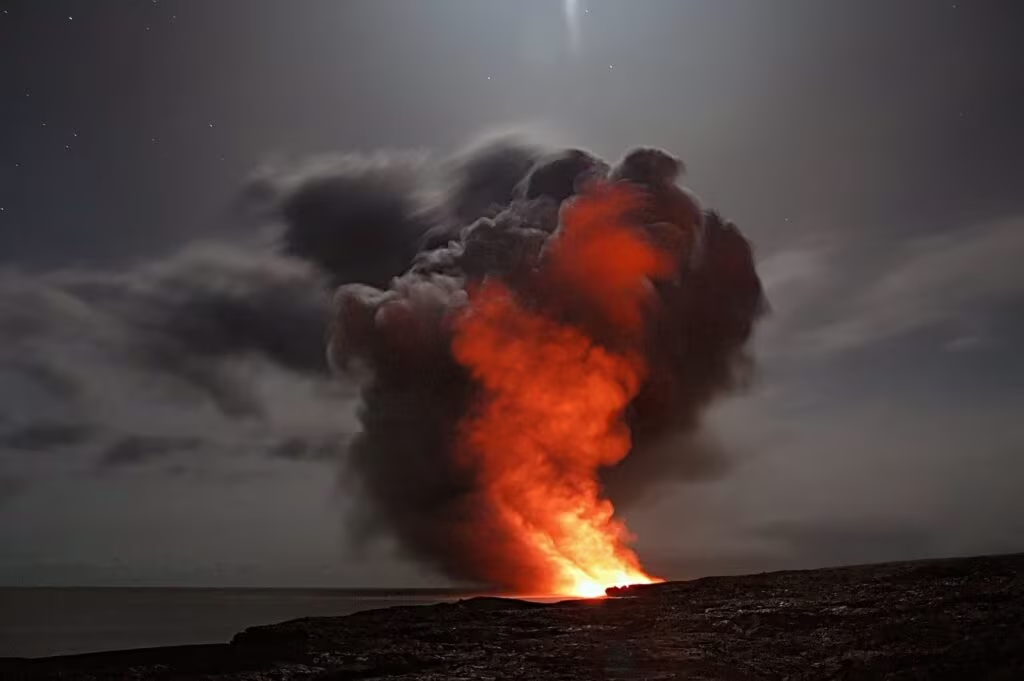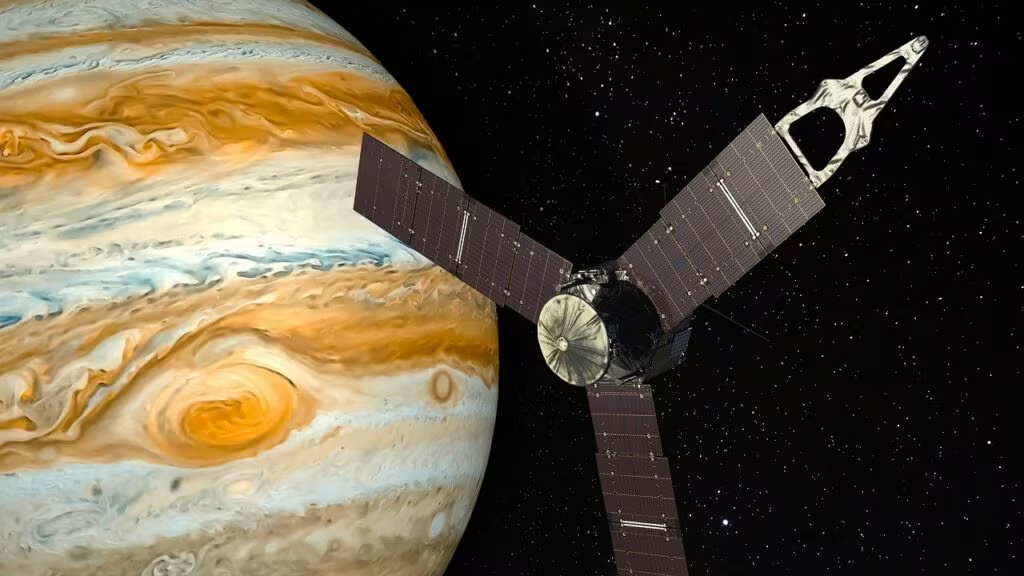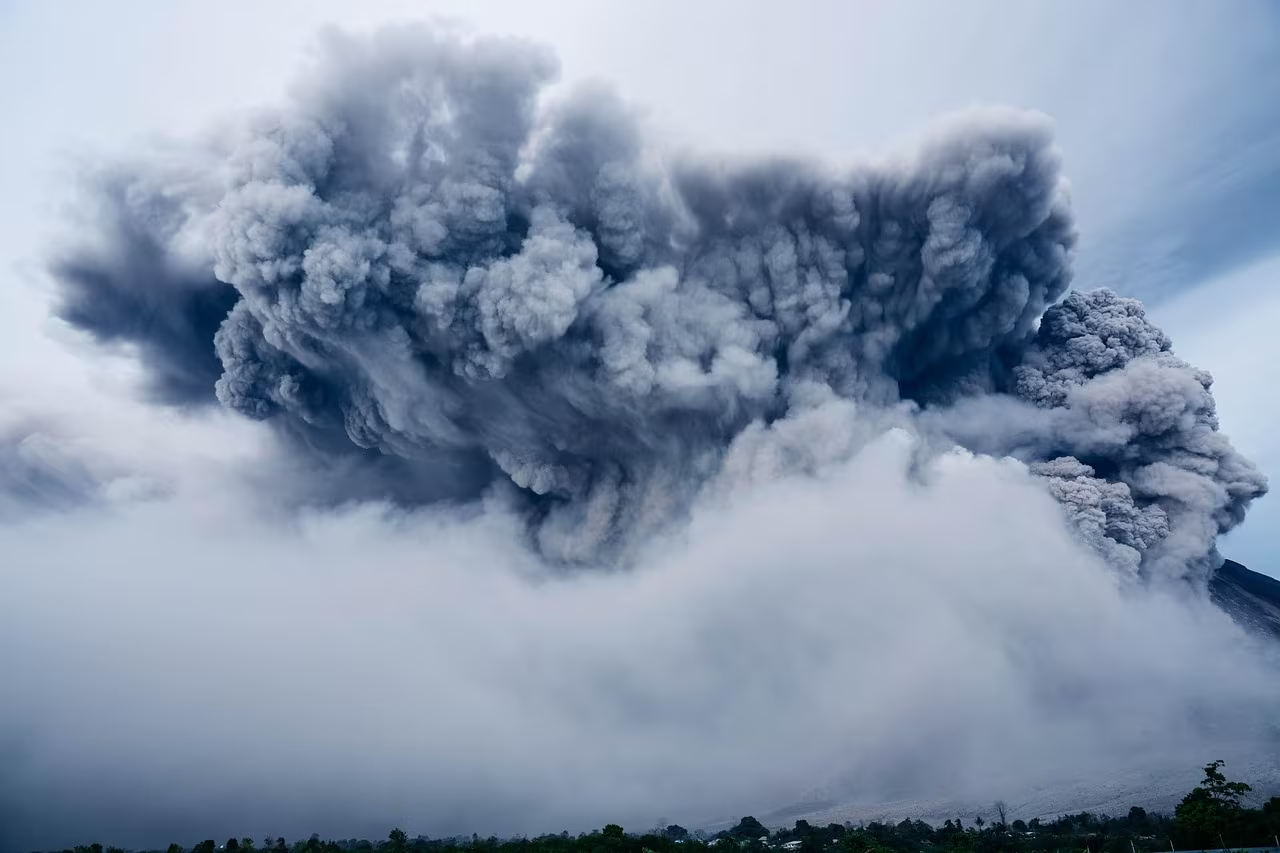New Data Reveals Jupiter’s Moon Io is Hundreds of Times Hotter Than Previously Modeled
The solar system’s most volcanically active world, Io, a moon orbiting Jupiter, is generating and dissipating far more internal heat than scientists had ever accounted for. New analysis of data collected by NASA’s Juno spacecraft suggests that Io’s total heat output could be hundreds of times greater than estimates derived from previous thermal models.
This dramatic revision fundamentally changes our understanding of the intense gravitational forces driving the moon’s extreme geology. The groundbreaking finding, based on Juno’s recent close flybys, confirms that the internal engine powering Io’s thousands of volcanoes is exponentially more powerful than previously calculated, requiring a complete overhaul of models describing the moon’s interior structure and energy dissipation.

Unpacking the Juno Discovery and Heat Flux Reassessment
The Juno mission, primarily designed to study Jupiter itself, has provided invaluable secondary data on the Galilean moons, particularly during recent close approaches to Io. Scientists utilized the spacecraft’s instruments to measure the thermal radiation emanating from the moon’s surface.
Previous estimates of Io’s total heat flux—the amount of energy escaping the interior—were based largely on observations from the 1990s (Voyager and Galileo missions) and ground-based telescopes. These older models typically suggested a total heat output in the range of $10^{13}$ to $10^{14}$ watts.
The new Juno data, however, indicates that the true heat output is significantly higher, potentially reaching into the quadrillions of watts. This massive discrepancy suggests that the previous models were severely underestimating the efficiency of Io’s internal heating mechanism.
The Mechanism: Extreme Tidal Heating
Io’s intense heat is not generated by radioactive decay, as is the case for Earth’s internal heat, but by a phenomenon known as tidal heating. This process is the result of a continuous, violent gravitational tug-of-war:
- Jupiter’s Immense Gravity: Jupiter, the largest planet in the solar system, exerts a colossal gravitational pull on Io.
- Orbital Resonance: Io is locked in a precise orbital resonance with its neighboring moons, Europa and Ganymede. This resonance prevents Io’s orbit from becoming perfectly circular.
- Flexing and Friction: As Io moves closer to and farther from Jupiter, the gravitational stress changes, causing the moon to be constantly stretched and squeezed—or “flexed”—by up to 100 meters per orbit.
- Internal Friction: This constant flexing generates immense internal friction, converting mechanical energy into thermal energy, similar to repeatedly bending a metal object until it heats up.
The Juno data implies that either the interior of Io is far more efficient at converting mechanical energy into heat than previously thought, or the moon’s interior is less viscous, allowing for greater deformation and friction under the tidal stresses.
Implications for Io’s Interior Structure
The discovery of a vastly higher heat flux has profound implications for the geological structure of Io. If the moon is generating heat at this rate, it must be dissipating it equally quickly, primarily through its prolific volcanism.
Evidence for a Global Magma Ocean
The sheer volume of heat suggests that Io’s interior must harbor a massive, potentially global, layer of molten rock—a magma ocean. While the existence of a subsurface magma layer has long been theorized, the new heat estimates provide compelling evidence that this layer must be extremely hot and highly dynamic.
This magma ocean would act as a crucial buffer, absorbing the tidal energy and facilitating its rapid transfer to the surface through volcanic vents.
Key Characteristics of Io’s Interior (Based on New Data):
- Higher Internal Temperatures: Internal temperatures are likely much higher than the $1,200–1,600$ degrees Celsius previously estimated for the magma layer.
- Thinner Crust: The crust must be relatively thin and fractured to allow for such rapid and widespread heat release.
- Silicate Volcanism: The high heat output supports the observation that Io’s volcanoes erupt silicate lavas, which require extremely high temperatures (up to 1,300 degrees Celsius) to remain molten, unlike the cooler water-ice volcanism found on Europa.

Io’s Role in the Jovian System
Io is not just a geological marvel; it is a critical component of Jupiter’s vast magnetic and plasma environment. The intense volcanic activity constantly vents material—primarily sulfur dioxide, sulfur, and oxygen—into space.
This material forms the Io Plasma Torus, a doughnut-shaped ring of ionized gas that encircles Jupiter along Io’s orbit.
The Flux Tube Connection
The material ejected from Io’s volcanoes is stripped of electrons, becoming plasma. This plasma is then swept up by Jupiter’s powerful magnetic field, creating a massive electrical current known as the Io Flux Tube. This tube acts like a colossal electrical wire, connecting Io directly to Jupiter’s atmosphere and generating spectacular aurorae at Jupiter’s poles.
The increased heat and volcanic activity implied by the Juno data mean that Io is likely injecting even more material into the plasma torus than previously calculated, further energizing Jupiter’s magnetosphere and influencing the environment of the other Galilean moons.
Historical Context and Future Exploration
The extreme nature of Io was first revealed by the Voyager 1 and Voyager 2 flybys in 1979, which captured images of massive, umbrella-shaped plumes erupting hundreds of kilometers into space. The subsequent Galileo mission (1995–2003) provided detailed, long-term observations, confirming Io’s status as the most active world in the solar system.
However, the Juno mission, which began orbiting Jupiter in 2016, offers a new perspective, particularly through its ability to measure heat flux globally and its unique orbital path that allows for closer, more frequent observations of the polar regions.
The revised heat estimates underscore the need for dedicated future missions to Io. While Juno continues to provide valuable data, missions specifically designed to map Io’s thermal output and internal structure could confirm the existence and characteristics of the hypothesized global magma ocean, providing definitive answers about the mechanics of tidal heating.

Key Takeaways: The New Reality of Io
The findings from the Juno mission fundamentally redefine the energy budget of Jupiter’s innermost major moon. Here are the essential points:
- Massive Heat Output: Io’s total heat flux is estimated to be hundreds of times higher than previous models suggested, potentially reaching quadrillions of watts.
- Source: This heat is generated by extreme tidal heating, caused by the gravitational flexing induced by Jupiter, Europa, and Ganymede.
- Internal Structure: The high heat strongly suggests the presence of a vast, highly energetic subsurface magma ocean that facilitates rapid heat transfer.
- Volcanism: The findings support the observed high-temperature silicate volcanism on Io’s surface, requiring extreme internal temperatures.
- Jovian System Impact: Io is likely injecting more material into the Io Plasma Torus, significantly influencing Jupiter’s powerful magnetic field and aurorae.
Conclusion: A More Energetic Solar System
This discovery reinforces the dynamic and often violent nature of the outer solar system. Io, once thought to be merely warm, is now confirmed to be a true powerhouse, demonstrating the incredible efficiency of gravitational forces in driving planetary geology. For planetary scientists, this new data provides a critical constraint for modeling the interiors of tidally heated worlds, not just in our solar system, but around other stars as well. The revised understanding of Io’s energy budget ensures that this small, fiery moon will remain a primary target for future deep-space exploration.
Original author: Robert Lea
Originally published: November 7, 2025
Editorial note: Our team reviewed and enhanced this coverage with AI-assisted tools and human editing to add helpful context while preserving verified facts and quotations from the original source.
We encourage you to consult the publisher above for the complete report and to reach out if you spot inaccuracies or compliance concerns.

